Maximizing Your Digital Presence: 3 Strategies for Success
In today’s competitive business landscape, cultivating a formidable digital presence isn’t just beneficial—it’s essential. But what exactly does it entail, and how can businesses help ensure theirs stands out amidst the digital noise?
A digital presence encapsulates all the facets of your business that surface during an online search. This encompasses your website, social media profiles, customer reviews, and more. Yet, despite its significance, the digital presence often needs to be noticed in the hustle and bustle of modern marketing strategies. However, integrating a robust digital presence into your marketing endeavors is paramount because it’s what potential customers encounter when seeking your business online.
Crafting a compelling digital presence doesn’t have to be daunting. With the aid of essential resources such as a well-designed website, active social media engagement, business directory listings, and customer reviews, you can elevate your online presence significantly. Let’s delve into three fundamental strategies to bolster your digital presence:
Elevate Your SEO Strategy
Search Engine Optimization (SEO) is the cornerstone of driving website traffic and enhancing brand visibility. By optimizing your website for relevant keywords and enhancing its structure, you can ascend the ranks of search engine results pages (SERPs).
On-site SEO entails fine-tuning various elements of your website to enhance its visibility and relevance to search engines. This encompasses optimizing HTML source code, streamlining page speed, and helping ensure content is keyword-rich and user-friendly.
Off-site SEO, on the other hand, revolves around actions taken outside your website that influence its SERP rankings. This involves cultivating backlinks from reputable sources, thereby bolstering your site’s credibility and authority in the eyes of search engines.
Embrace Diverse Social Media Platforms
The proliferation of social media platforms has revolutionized communication and consumer engagement. From Facebook and Instagram to LinkedIn and X, each platform offers unique opportunities to connect with diverse audiences.
While Facebook remains a staple for many businesses, expanding your presence to platforms like Instagram and X can amplify your reach, particularly among younger demographics. These platforms are ideal for showcasing products, sharing engaging content, and fostering meaningful interactions with your audience.
When venturing into new social media territories, conduct thorough research to identify where your target audience congregates. Tailor your content to suit the preferences and behaviors of each platform’s user base, thereby maximizing engagement and visibility.
Cultivate Brand Authority
Brand authority is the bedrock of trust and credibility in the digital landscape. By consistently delivering valuable content and demonstrating expertise in your niche, you can position your brand as a trusted industry leader.
Building brand authority entails fostering deep connections with your audience and establishing yourself as a reliable source of information and insights. This can be achieved through thoughtfully curated content, active engagement on social media, and collaboration with influencers within your industry.
Moreover, brand authority correlates directly with SEO performance. By showcasing your expertise through authoritative content and leveraging opportunities to demonstrate thought leadership, you can enhance your website’s relevance and visibility in search engine results.
Final Thoughts
In 2024, staying ahead of the digital curve is paramount. By implementing these strategies to bolster your digital presence, you can fortify your brand’s visibility, credibility, and relevance in the eyes of consumers.
At Onimod Global, we craft bespoke digital marketing strategies tailored to your unique needs and objectives. Whether you’re seeking to optimize your SEO, expand your social media footprint, or enhance your brand authority, our seasoned digital marketers are here to guide you every step of the way. Contact us today to embark on a journey toward digital excellence.

